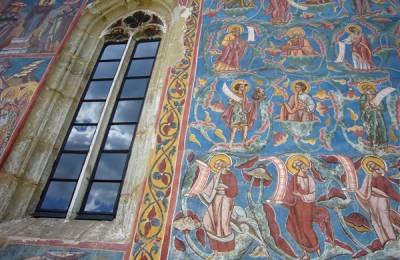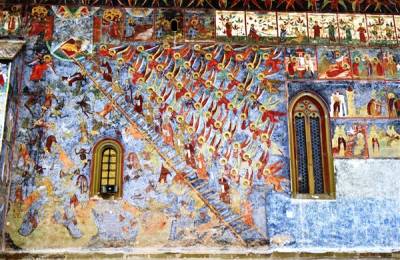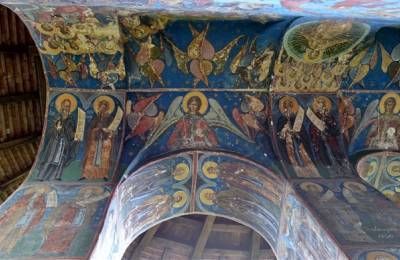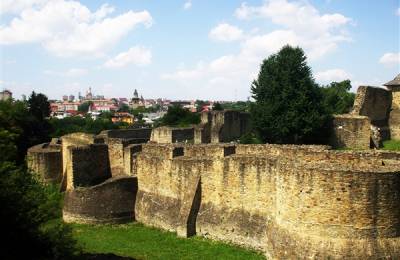Description
The North-Estern part of Romania is renowned for the beautiful landscapes and for its cultural, historical and religious objectives that are one of the most precious places of Romania, high estimated by the local people, but also by foreigners.
With old monuments reminding the glorious capital of Moldova province in the Middle Ages, the later named Bukovina has calm and subtle natural beauties. It is a region full of charm and tradition, with well know sub-regions: Dornelor Land (having hunt and fishing areas), Putna Valley, Moldova Valley, Rarau and Giumalau Massifs, and the Hills of Bukovina (a huge history museum). The wonderful monasteries in Bukovina (Voronet, Humor, Sucevita and Moldovita) are real jewelry of Moldovian feudal architecture.
Bukovina is also known for its folk costumes, furniture, pottery, tapestry and carpets. Every detail of these handicrafts reflects the historical and cultural heritage of the region. Ornamental Ester eggs, braided bread, folk masks and traditional costumes are produced in celebration of certain religious events. Many artisans in Bukovina still preserve age-old customs and techniques. Visitors can still observe potters, wood sculptors, needle workers and weavers at work and may buy their products inexpensively.
The cuisine is both simple and healthy. From tasty meat and sausages dishes such ass sarmale (pork stew, minced meat rolls wrapped in sauerkraut or grapevine leaves) to delicious cakes and strong beverages such ass ţuicã (plum brandy) or wild berry brandy.
Hospitality is as plentiful as air in Bukovina. Many local people have turned their homes into guesthouses for visitors wishing to spend their vacation in the countryside. The uniqueness of Bukovina villages makes them "open air postcards" and the ultimate experience for tourists.
Attractions
The Painted Churches of Bucovina – UNESCO World Heritage Sites
During the reign of Petru Rares, Bucovian Christian art reached its peak, in churches’ interior painting, but even more in those on the exteriors, which became more important that the architecture.
The painted churches of Bucovina: Voronet, Sucevita, Moldovita, Humor, Probota, Patraut and Arbore, are the proper destination not only for the ones who want to be more closed to divinity, from the spiritual point of view, but also for the history fans.
Voronet Monastery
Legend has it that during one of his many wars with the Turks, Voivode Stephen the Great went to the Voronet Monastery to seek advice. He then return to battle and won. Stephen kept his promise to Voronet’s monks and as a sign of appreciation built a church.
Small but extremely beautiful, The Voronet Monastery was nicknamed the Oriental Sistine Chapel, and the shade of blue that permeates the wall paintings is famous all over the world. The church’s artworks are considered the best representation of Moldovian feudal art. The wall paintings are distinctive for their bright colors, echoing those of the natural surroundings, their greens and blues natural vegetable colours sourced from local plants.
The Voronet Monastery is one of the few historic religious establishments which has, for the most part, retained its original form.
Sucevita Monastery
Built in the 16th century, and combining Gothic and Byzantine artistic elements with the style established during the reign of Stephen the Great, Sucevita has a special value. The exterior painting, famous for its shade of green, illustrates epic biblical tableaus from Old and New Testaments.
Moldovita Monastery
The Moldovita Monastery is located 27 km from Campulung Moldovenesc city. It’s exterior paintings are true masterpieces whose remarkable preservation over the centuries has left their splendor untouched by time.
Humor Monastery
At five kilometers distance of the little town Gura Humorului, in the picturesque village Humor, surrounded by old trees and dewy fields, Humor Monastery is set on a hill’s top in one of the most fascinating of the Suceava count. The Church of the Humor Monastery is a famous foundation of the Middle Ages.
Probota Monastery
Probota Monastery completes the list of Bucovina jewelry and it is the religious place where Stephen the Great’s mother was laid to sleep for eternity. The present construction dates from 1530 and the history of the place started ever since the days of Peter I, who built a wooden monastery on this land..
Patrauti Church
With a warm architectonic and perfectly harmonized forms, Patrauti Holy Cross Monastery represents a real clerical jewel. The religious place excels in the historical signification charter, being the first, the oldest Christian edifice buil in Moldovian style.
Arbore Church
For the believers who want for a few moments to collect their thoughts and to be closed to God. Interesting for a church is that on the west wall is painted the Cavalcade of the Constantine Emperor, a scene that sends a strong anti-Ottoman message.
Suceava Royal Fortress
The fortress, former capital of the Moldavia province in the Middle Ages, is situated in the east part of the Suceava town, on a high plateau, having a dominant position. The citadel was constructed in 14th century by Petru Musat, developed and strengthen by Alexander the Kind and later by Stephen the Great, who transformer it into a bastion against the country’s enemies.
Ciprian Porumbescu Memorial House
In Stupca, a locality of the county of Suceava, the music fans can enter in the universe in which the biggest composer of Bucovina lived. The museum complex consisting of both the Museum of Ciprian Porumbescu and the Memorial House in which the founder of the Romnanian moderb music has lived. The Memorial House is impressive not only for its historical importance but also for the architectonic style. Inside, the family pictures of the composer or the personal objects give the visitors the opportunity to belong for a few moments to the universe that marked the creation of Ciprian Porumbescu.
Bucovina’s Village Museum
The museum is situated in Suceava city, near to Suceava Citadel and it lays on 6 ha. Practically, a whole traditional Bucovina village has been reconstituted in the smallest detail. The visitor may explore the village’s church, the workshops of the small handicraftsmen, the mill, the inhabitants households and why not, even the pub. An important architecture monument present in the museum is the Vama Church dating from 1783, original from the locality whit the same name.
The traditional Romanian village is so accurate realized in the Bucovina Village Museum, that there is a riverflowingthrough it called the Mill Stream, and a beautiful mill which isreconstructed from Humor Monastery.
Marginea Traditional Workshops
Marginea village, located at the lap of Obcinelor Hills, is famous for the black ceramic objects that are made by special burning technique and than polished with a river stone. The Geto-Dacian technique was transmitted from generation to generation which proves the continuity of the aboriginal population in this region.
Marginea became famous in the whole world due to these workshops, and the products made by artisans have been exposed in several countries.










